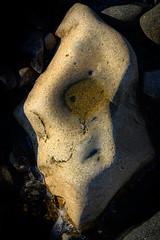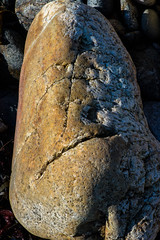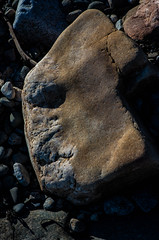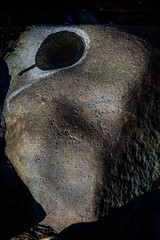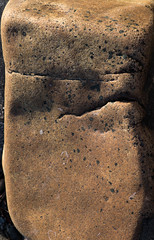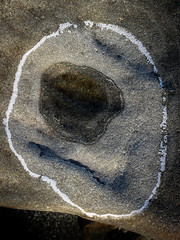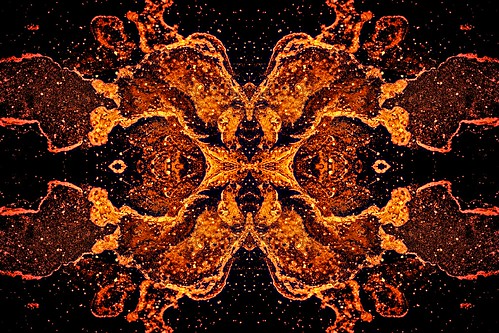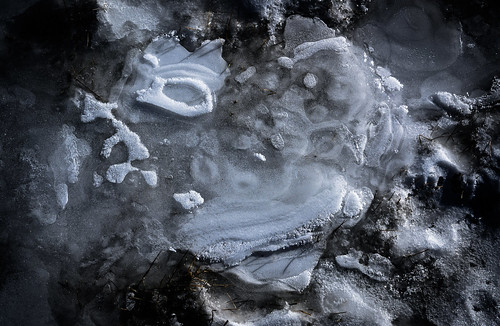
I’ve been thinking about this image ever since I captured it back in August, and wondering how to explain what I saw, what it means, and how it fits into my evolving sense of personal engagement with photography.
The train of thought came about during a yoga nidra session, as I lay immobile for 40 minutes or so with no other visual stimulus than a ho-hum quotidian ventilation duct on the ceiling 15 feet above me. The suggestion was that I close my eyes, but they decided to remain open. The eyes seem often to have minds of their own. The wider context included about a year of deep and deeper immersion in photography, including lots of reading and writing and thousands of photographs studied and taken.
Contemplation of the metal duct provoked the insight that narratives unfold —the case with most tessellations, and also with the presentation of groupings of images, exemplified by my galleries of faces on rocks and other materials. As one looks and studies and ponders, unexpected visions and associations arise, and underlying realities emerge, or (as it might be) are imagined.
The duct itself is pretty simple: a utilitarian presence with little or no artistic intent, a piece of unpretentious industrial design, one of many thousands of ducts, formed of sheet metal in a way that is sensitive to function and to market pricing, and surely not imagined by designers and manufacturers as the inspiration for anything. Geometrically it’s just a triangle, mirrored and then mirrored orthogonally into a symmetrical diamond shape. But upon contemplation it’s clear that there’s more to it: a something else that might be a Creature manifests, equipped with eyes and even a tongue. And suddenly the duct is not so simple, and inspires the viewer to consider Unfolding, and Creaturehood, and Allegory.
Namaste, tout le monde.
The next morning I returned with a camera and found that the Creature was still in residence, and was as provocative as it had been the day before.
The Full-frontal Spiritual Manifestations: gods, godlets, daemons and other beings project seems a direct outcome of the adventure with the duct.
Addendum: the wee hours found me considering that Agglomerations consist of Agglomera, and that the singular would thus be Agglomerum; Agglomeratio would be the act of gathering up Agglomera. By itself,
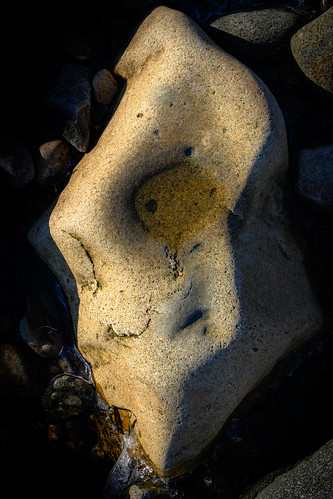
is just an oddly-shaped rock, but in company (
Agglomerated) with others of its ilk, other possibilities emerge:
